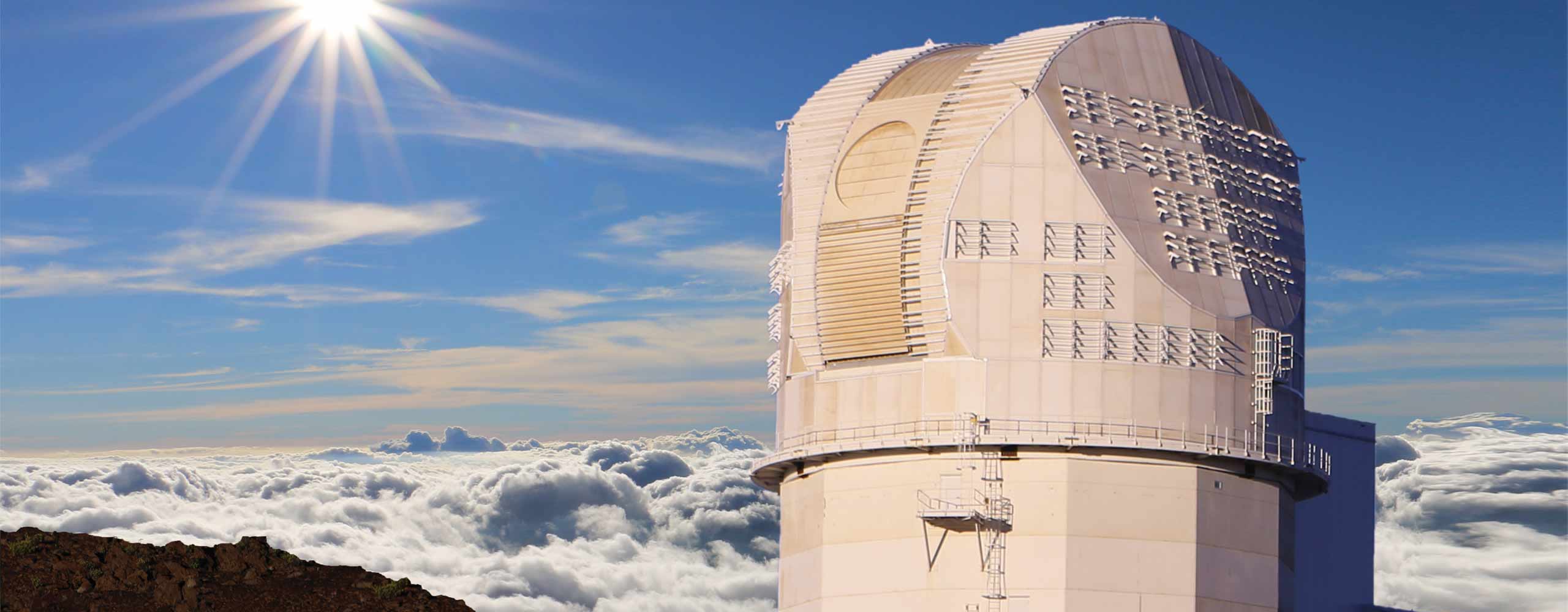Composite image of the Daniel K. Inouye Solar Telescope, the world’s most powerful solar telescope. Image credit: NSO/NSF/AURA
NSF National Solar Observatory (NSO) advances knowledge of the Sun as the dominant external influence on Earth and as the local archetype of a typical star.
NSF National Solar Observatory (NSO) supports facilities that provide forefront observational opportunities for the solar research community, and leads the operation of the Daniel K. Inouye Solar Telescope on Maui in Hawaii. The construction of Inouye, funded by the U.S. National Science Foundation (NSF), was completed in 2021.
The Inouye Solar Telescope, a collaboration of 22 institutions, is the largest and most advanced solar telescope in the world, with unprecedented abilities to view details of the Sun. Using adaptive optics technology and a 4-meter telescope, Inouye will explore physical processes that link the Sun to the Earth, and will set the stage to develop enhanced predictive capabilities of explosive solar events that drive geomagnetic storms. Inouye will also further our understanding of other stars by allowing scientists to study fundamental physical processes that occur on their surfaces.
NSO also operates the Synoptic Optical Long-term Investigations of the Sun (SOLIS) and the Global Oscillation Network Group (GONG). SOLIS observes the Sun over decades to understand the solar activity cycle, solar irradiance changes, and energy releases in the solar atmosphere. GONG is a six-station network of extremely sensitive solar imagers located around Earth, including a site on Cerro Tololo in Chile. GONG provides continuous imaging of the Sun and its solar magnetic field, and has been identified as a crucial asset for space weather operational forecasting.
AURA operates NSO for the U.S. National Science Foundation under a cooperative agreement.


